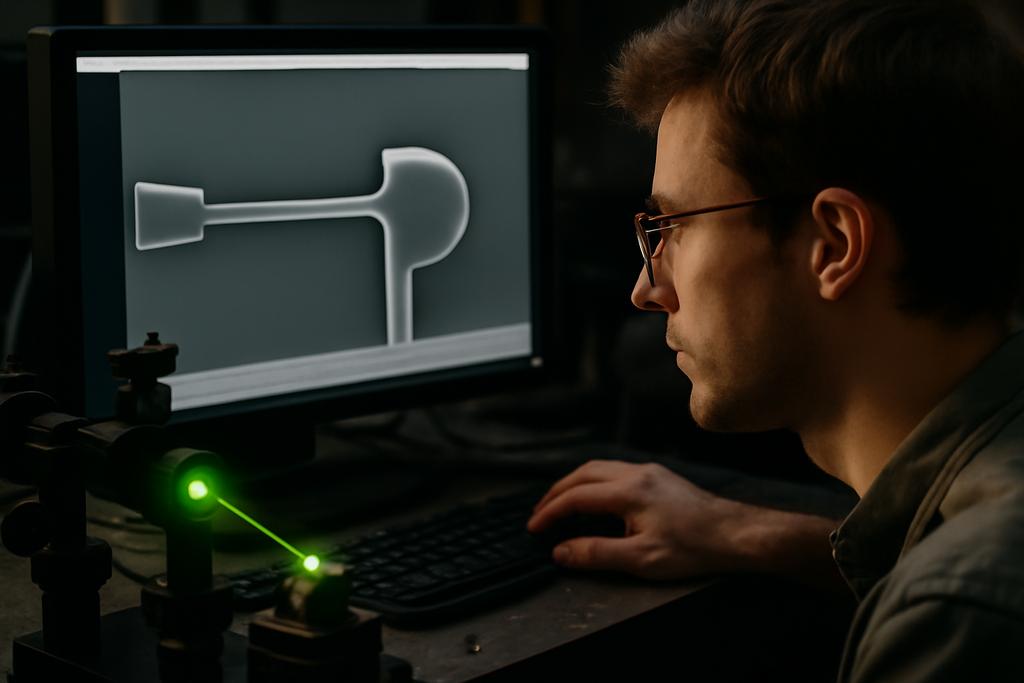Revolutionizing Nanofabrication: A New Era for Tiny Resonators
Imagine building incredibly intricate, almost impossibly tiny devices with the precision of a Swiss watchmaker, but at a speed previously unimaginable. That’s the breakthrough achieved by researchers at the University of Ottawa, led by Raphael St-Gelais and Arnaud Weck. Their work focuses on silicon nitride (SiN) nanomechanical resonators—minuscule components with enormous potential for applications ranging from highly sensitive sensors to groundbreaking studies in fundamental physics.
The Challenge of Tiny Things
These resonators, crucial in various technologies, are notoriously difficult to create. Traditional methods involve painstaking steps: photolithography, etching, and aligning multiple masks—a process that’s time-consuming, inflexible, and prone to errors. The resulting structures often have unwanted material overhangs, significantly degrading their performance. It’s like trying to carve a delicate sculpture from marble using a jackhammer — precise control is extremely difficult.
A Laser’s Precision: A New Approach
The Ottawa team took a different tack. They employed femtosecond lasers—lasers that emit incredibly short pulses of light—to directly ablate (remove material from) free-standing SiN membranes. This approach, while promising, initially faced limitations. Early attempts, relying on manual programming and the combining of basic ablation routines, were slow and cumbersome, restricting the complexity of the resulting structures. Think of it as building a magnificent castle, brick by painstaking brick, instead of assembling prefabricated sections.
Software to the Rescue: Automated Design and Fabrication
The researchers’ key innovation is a powerful, open-source software toolset called the Stress-Controlled Laser Micromachining Toolset (SCLMT). This software automatically translates standard semiconductor layout files (GDSII format) into highly precise instructions for the laser, enabling the fabrication of arbitrarily complex resonator geometries. The SCLMT not only streamlines the design process but also incorporates a clever alignment tool that dramatically reduces residual SiN overhang, minimizing performance degradation.
The Impact of Speed and Precision
The implications are transformative. What once took hours or even days can now be accomplished in under an hour. The speed and flexibility offered by SCLMT enable rapid prototyping and iterative design, allowing researchers to quickly explore new geometries and optimize performance. It’s as if we’ve traded hand-drawn blueprints for 3D printing in the realm of nanomechanics.
High-Performance Results
The researchers fabricated various trampoline-based resonators, achieving quality factors (a measure of performance) up to 3.7 × 106. Crucially, these quality factors are comparable to those of structures made using traditional, far more laborious techniques, demonstrating that the laser-machining process doesn’t compromise performance. The team also exhaustively characterized two specific designs, demonstrating their potential for high-performance radiation sensing.
Future Implications and Challenges
This breakthrough paves the way for significant advances in various fields. Highly sensitive sensors, more efficient signal processing, and new possibilities in fundamental physics research are all within reach. The researchers plan to extend their laser-machining technology to even higher-stress SiN membranes—a challenge that could unlock even greater performance gains and further cement femtosecond laser ablation as a leading nanofabrication method.
Beyond the Lab: A New Era of Tiny Devices
The impact of this research is profound. The ability to rapidly and precisely fabricate complex nanomechanical resonators opens doors to innovative technologies we can only begin to imagine. From improved medical diagnostic tools to more efficient energy systems, the potential applications are vast and far-reaching. This work by the University of Ottawa team is not just a scientific achievement; it’s a testament to the power of innovation and the boundless potential of miniaturization.










